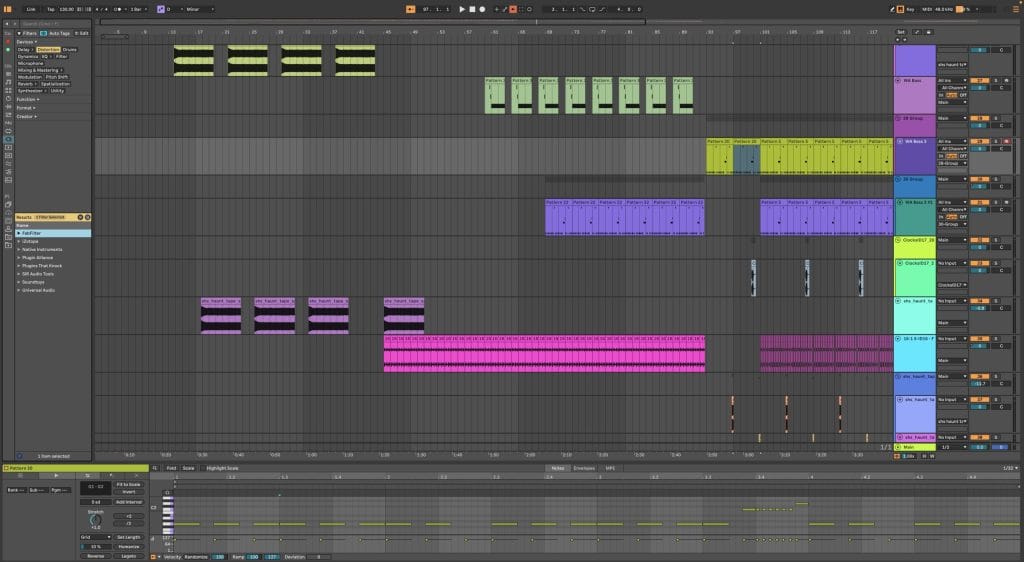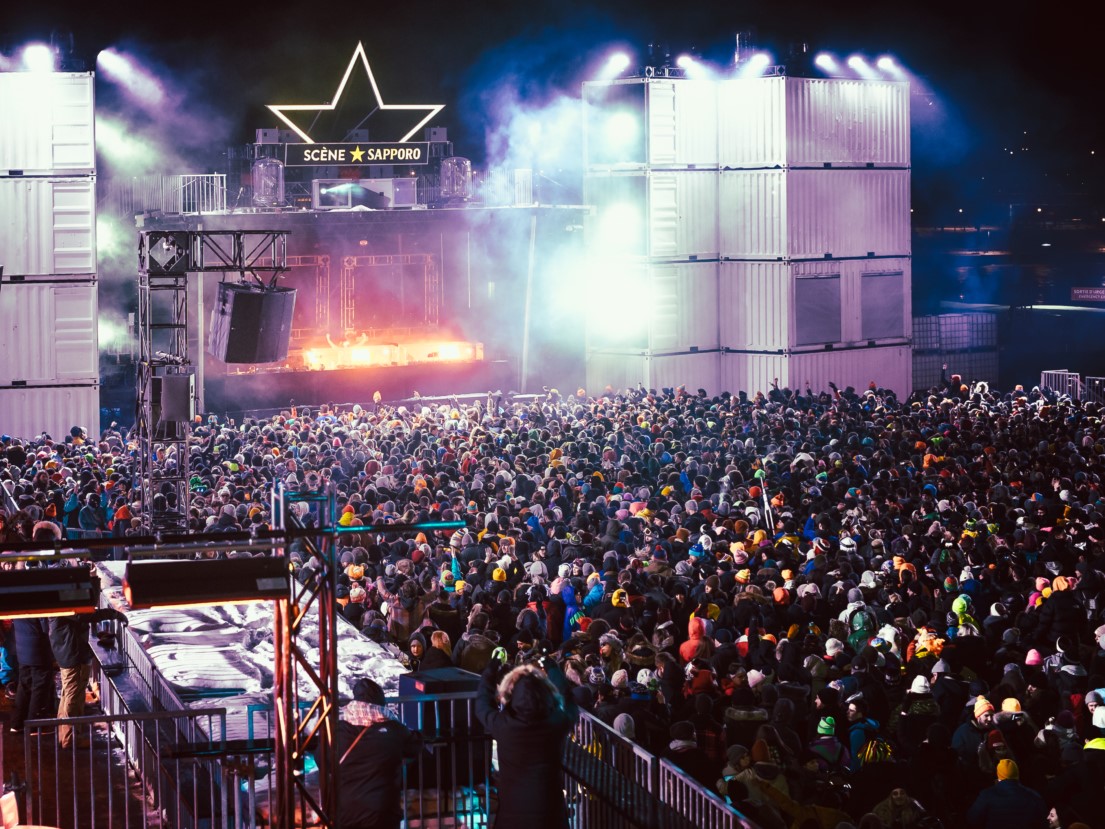
How It Was Made: Ward Andrews – Uncharted Course
Ward Andrews doesn’t make tracks that beg for attention. He builds slow-burning, emotionally detailed records that feel more like scenes than songs. “Uncharted Course,” the second single from his upcoming EP The Decoration of Time, is a perfect example—equal parts melodic progressive house and cinematic storytelling, built for long walks, headphone sessions, and anyone willing to let a track breathe before it hits.
The backbone of it all is a modified Sylenth1 preset, driving the bassline with a pulsing arp that shifts shape as the track moves forward. From there, it’s all subtle moves that serve the bigger picture: Raum for controlled reverb, EchoBoy for stereo movement, and Valhalla Supermassive to smooth out the gated chord stack in the second half. Nothing here is flashy on its own, but stacked together, it creates a sense of momentum that keeps you locked in.
In this breakdown, Ward walks through each element and why it’s there.
He also shares a few thoughts about storytelling through arrangement—treating instruments like characters, swapping plugins to shift the emotional tone subtly, and writing tracks that serve a bigger arc than just the drop.
If you’re trying to make records that feel intentional from start to finish, this one’s worth digging into.
Sylenth
The main synth of this song comes from Sylenth1, which is a great synth for producing sounds from a previous era. As someone inspired by music from the 80s and 90s, I find myself using Sylenth often for arp-style basslines. In this case, I modified one of the stock presets which had the exact feel that I was going for!
The bassline has a busy, arpeggiated role in this song. The arp tab in Sylenth’s center console helps take care of intricate MIDI and helps spawn ideas that you wouldn’t normally think of. The cutoff filter is being automated throughout the track.
This creates the classic small and tight sound versus an open and large sound that you hear a lot of saw waves do in electronic music. For example, someone like Deadmau5 is popular for using this technique on big chord stacks. In this case, I’m doing it on a bass.
Sylenth is a great tool for anyone making electronic music in any subgenre. Most people seem to use Serum, so sometimes I like to use less popular synths to give my music a different quality. It may be subliminal, but even that is important to me.
My favorite thing about Sylenth has to be the ease of the cutoff filter. It’s hard to get bad results – and if you do, just nudging the resonance knobs can create a huge difference if you listen closely (which is what’s happening in this track, as the resonance knob is at about 3%.)
Raum

After adding some simple mixing effects to the bassline like compression, EQ, and sidechain, it still needs more sound design. Sometimes when things feel too dry in the mix, a slight amount of reverb makes a big difference. Raum is a reverb plugin by Native Instruments and it’s one of my go-to tools.
In this instance reverb is for utility not style. The bass was too dry and lackluster, so adding reverb with a short decay and bandpass signal was just enough to give the track a space to exist in. Reverb is all about defining and contextualizing a space. Sometimes when you’re in the DAW, it’s too digital and your ears know that it exists artificially. I know other artists who will do the same thing with convolution, but Raum is just such a reliable plugin that it’s always top of mind (and it sounds great!)
This trick is very useful for any artist who is in electronic music or a digital-focused music genre. Reverb is essential and Raum has a ton of features to boost its versatility. It’s fun to play with the decay and pre-delay to create more detailed reverb responses if your initial settings don’t feel quite right.
Echoboy

Echoboy is amazing. It’s a versatile, artistic delay plugin with countless settings and parameters, there’s still so much I could learn about it. When set to the ping-pong setting, each delay impulse takes a turn hitting the left or right channel to create a wonderful stereo enhancement.
For this use case, the bass was sounding great after adding Raum’s short reverb, but now it needed new embellishments throughout. So I bounced the bassline to audio, pitched it up one octave, and started messing around with echoboy. If you listen to the drops, you can hear when this 2nd layer comes in and out. (Just enough to keep your ear amused, but not so much that it’s busy and takes the listener out of the trance.)
It’s fun using delay plugins on small bits of rendered audio to customize the region where you’re getting a delay signal. Think of it like a reverb throw, but for delays which aren’t on a send but triggered by the audio sample. Since the audio is 12 semitones higher, taking it out of the subharmonic territory, I can get away with the stereo effect. It makes the whole drop feel wider and bigger.
It’s a must have for any genre from country to techno and everything in between; it can be used for straightforward classic delay, or creative sound design decisions.
Valhalla Supermassive

Finally we have Valhalla Supermassive. This plugin can create huge lush soundscapes or simple room reverbs with just a few simple knobs to control. And it’s free!
For this track, I put Supermassive on the gated chord stack in the back half of the track. Using a gate plugin, I was able to get a classic 90s-inspired trance pattern out of the otherwise simple and still legato chords. This part of the song needed more energy and rhythm. So I brought some Supermassive into the mix to make the harshness of the volume gate smoother and feel bigger thanks to some reverb.
Another trick to try is swapping plugins that would serve the same purpose.
For example, I could have executed this with Raum as I did for the bassline. But by using a different plugin for the same purpose, you introduce a new algorithm into the mix and although subtle, this can have a differentiated subliminal effect on the audience’s ear. Sort of how in a symphony each person is autonomously playing their own instruments with their own “algorithm”, but as a whole unit, they come together to create an orchestra.
Using a variety of plugins that serve the same purpose is a great technique for any genre, especially EDM and house music.
Quick Fire Tips For Making Progressive House
Tip #1 – I describe this work as “cinematic progressive house”, mindset matters, are you telling a story and introducing instruments as characters in a story or scene?
Tip #2 – I envision a movie storyboard: where is the origin, where is the transformation, where is the outcome? What does that sound like?
Tip #3 – Think outside the confines of the track: how does this piece of music progress the story of the EP it resides within and the story of my artistic journey and the listener’s experience of it?
Tip #4 – This track is sometimes described as linear or without production variety. The details are missed. Listen close, eyes closed, with headphones, to find the world of texture, sound and depth.
Tip #4 – Trust yourself. Ask: “what is the track I’ve always wanted to hear?” “what is the feeling I’ve always wanted one of my records to deliver?” Create from there.



